By Desis, for Desis and Everyone Else!!
What’s a Desi?
The term “desi” is a term that is commonly used by people from the Indian subcontinent to refer to themselves or other people (origin or ancestry) from the region.
The word “Desi” is derived from the Sanskrit word “desh,” which means “country” or “region” or “homeland”. (‘Sanskrit’ word ‘Desh’? What is Sanskrit?)
Did you ever wonder:
What is Indian culture like? Learn more!
Interesting facts about India you didn’t know about!
Explore Indian customs.
Traveling to India? You are in for a treat – Explore here!
Here are a few articles from this site – use the menu at the very top of this page to discover many more…
Desi people can come from countries such as India, Pakistan, Bangladesh, Nepal, Sri Lanka, Bhutan, and Maldives. The term can also be used to describe aspects of Indian origin culture, including food, clothing, music, and art.
Onam
Summary
Nestled in the southwestern corner of India lies the enchanting state of Kerala, a land renowned for its natural beauty, cultural richness, and vibrant festivals – often referred to as God’s own land. One such celebration that captivates the hearts of people of Kerala and visitors alike is Onam, a ten-day harvest festival that brings together tales of kings, Gods, cultural traditions, and a sumptuous feast that reflects the essence of Kerala’s spirit.
About Kerala
Kerala is a state in the southwest of India. It is located on the Malabar coast, which is bordered by the Arabian Sea to the west, Karnataka to the north and northeast, and Tamil Nadu to the east. The capital of Kerala is Thiruvananthapuram.
Kerala is known for its ecotourism initiatives, beautiful backwaters, and unique culture and traditions. It is also known as “God’s own Country”.
Kerala is a small state, making up only about 1 percent of India’s total area. It has a population of 30 million and a surface area of 38,900 km2. The majority language is Malayalam.
King Mahabali and Lord Vamana
At the heart of Onam lies the legend of King Mahabali and Lord Vamana (an avatar of Lord Vishnu). Mahabali, known for his just rule and devotion, attracted the attention of Lord Vishnu, who took the form of Vamana, a learned man but who is of a very small stature. Seeking alms, Vamana asked for three paces of land from the generous King Bali . The King grants his request. Vamana then grows to a giant and with his first two strides, he covered the earth and heavens. As there was no place for the third step, Mahabali offered his head and Vamana places his foot and pushes the king to the nether worlds. Impressed by his selflessness, Vamana granted him a boon to visit his kingdom once a year, a celebration that came to be known as Onam.
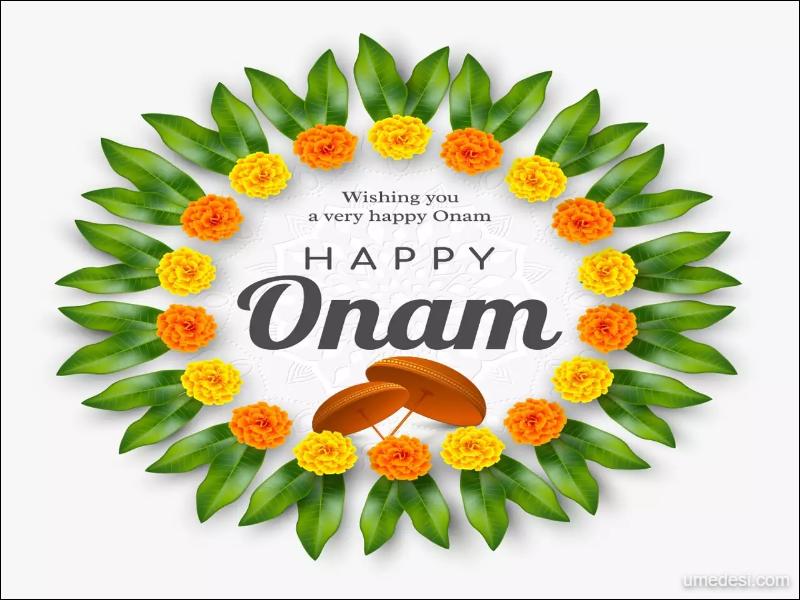
Ten Days of Onam
Onam spans ten days, each marked by unique rituals and festivities:
Onam: A Festival of 10 Days
Onam, the vibrant harvest festival of Kerala, unfolds over ten days, each brimming with its unique traditions, rituals, and cultural significance.
Day 1 – Atham
The festival commences with Atham, marked by the creation of a simple floral arrangement, “Pookkalam,” at the entrance of homes. It symbolizes the start of the festivities and encourages creativity and community engagement. This is a day of preparation. People clean their homes and decorate them with flowers. They also buy new clothes and food for the festival. This marks King Mahabali’s preparations to journey from Heaven to his earthly kingdom.
Day 2 – Chithira
Chithira signifies the essence of unity and the spirit of togetherness. The creation of Onam Pookkalam, a floral carpet, symbolizes this day’s festivities.Homes come alive with color as people contribute to the floral patterns. Pookkalam are made by women and children, and they are placed in front of homes and temples.
Day 3 – Chodhi
Another layer of flowers is added to the carpet, employing an assortment of four to five flower types. Families prepare for the days ahead by engaging in collective activities. This is a day of fasting and prayer. People pray for the well-being of their families and friends.
Day 4 – Vishakam
Vishakam sees the Pookkalam taking a more intricate form. The day holds a special significance as it marks the start of many cultural performances and events that continue throughout Onam. This is a day of celebration. People feast on traditional Onam dishes and enjoy cultural performances. This day launches various tournaments as part of the celebration.
Day 5 – Anizham
On Anizham, the Pookkalam continues to flourish with more complex designs. The festivities gain momentum, and various art forms like traditional dances and music performances grace the stages. On this day, people visit temples and offer prayers. Preparations for the grand boat race take place on this fifth day.
Day 6 – Thriketa
Thriketa witnesses a heightened enthusiasm as the Pookkalam becomes even more intricate and captivating. It’s a day of joy and excitement, as the community comes together to celebrate their shared cultural heritage. Festive celebrations are ignited on this day.
Day 7 – Moolam
As Moolam dawns, the Pookkalam reaches its zenith, showcasing the mastery of floral artistry. Traditional rituals and prayers are performed, reflecting the spiritual essence of Onam. Temples come alive with special pujas and rituals.
Day 8 – Pooradam
On Pooradam or Pooram, the excitement builds as families prepare for the upcoming boat races, “Vallamkali.” The highlight of the day is a grand procession of elephants and dancers. Idols of Vamana and King Mahabali are raised in homes to commemorate this day.
Day 9 – Uthradom
Uthradom, the penultimate day, is marked by intense preparations for the grand feast, “Onam Sadya.” Homes are cleaned, and ingredients are gathered for the culinary extravaganza. Mahabali’s symbolic entry into Kerala is observed. This is a day of homecoming. People believe that King Mahabali returns to Kerala on this day. They welcome him with a feast and prayers.
Day 10 – Thiru Onam
The pinnacle of Onam arrives with Thiru Onam or Thiruvonam. Homes are adorned with grand Pookkalams, and families don traditional attire. The day commences with rituals and prayers, followed by the grand Onam Sadya feast, where families and communities gather to savor the diverse flavors of Kerala’s cuisine. Cultural performances, games, and festivities mark the day, reminding everyone of the cultural unity and harmony that Onam symbolizes. The pinnacle of the celebration, this day sees the warm and reverential welcome of King Mahabali by the people of Kerala.
Onam Traditions
Pookkalam
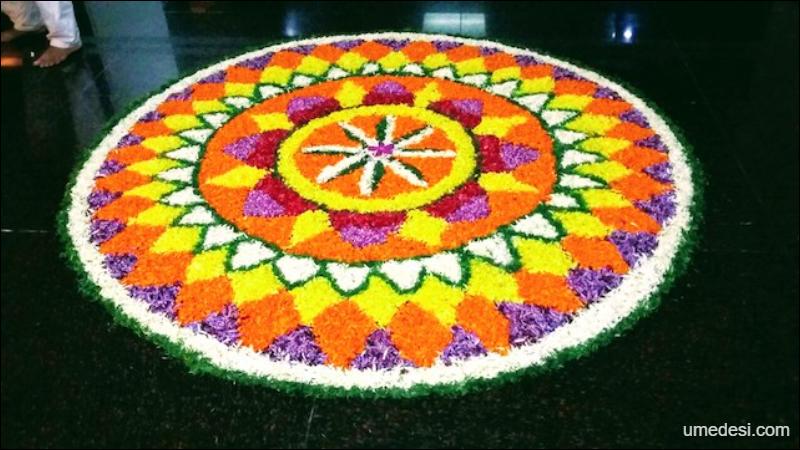
This is a floral carpet made of fresh flowers arranged in intricate patterns on the floor. People start making pookkalam from Atham onwards, and add a new layer every day until Thiruvonam. The pookkalam symbolizes the welcome to King Mahabali and also showcases the artistic talent of the people.
Vallamkali
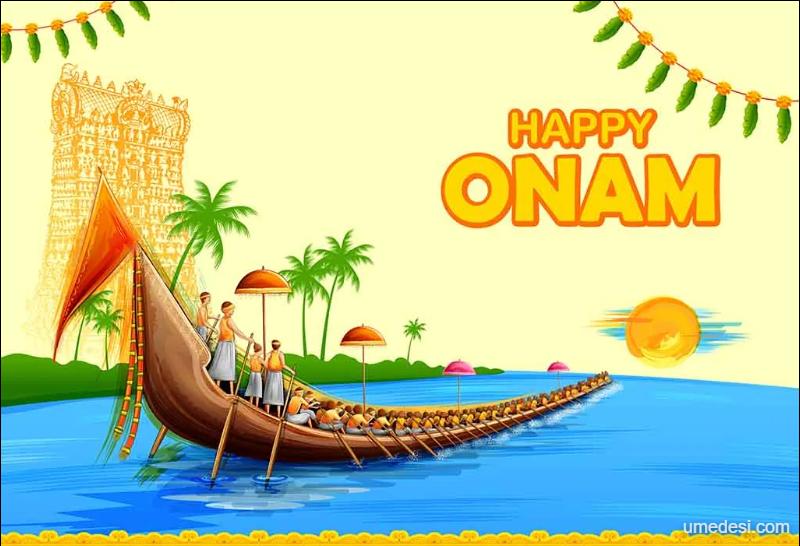
On the Pampa River, traditional boat races called “Vallamkali” are held, reflecting Kerala’s maritime heritage and unity. This boat race takes place on the backwaters of Kerala. The boats are long and narrow, and can accommodate up to 100 rowers.

The rowers wear white mundu (a traditional garment) and colorful turbans, and sing songs to synchronize their movements. The boat race is a spectacle of speed, skill, and teamwork.
Onakalikal
Traditional games such as tug-of-war, archery, and martial arts competitions engage participants and spectators.
Kayyikali is one of the famous sport – where the opponents use fists. This is quite brutal but popular. Usually has two teams. Read more here.
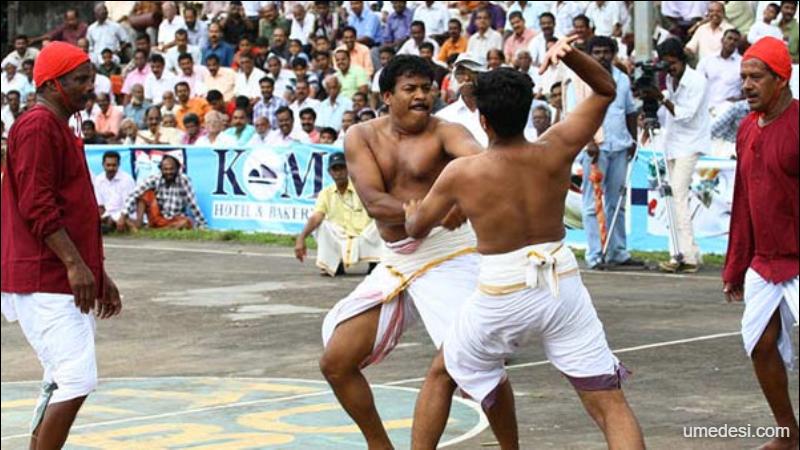
Sadya
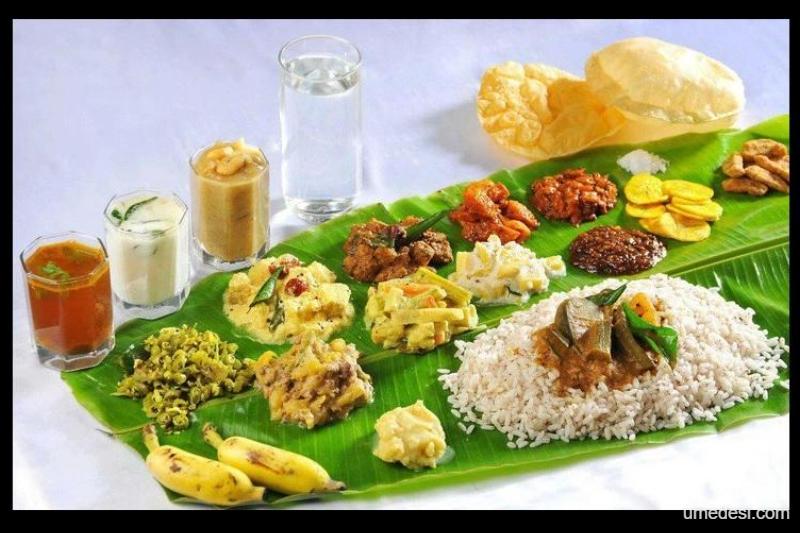
This is a grand feast served on a banana leaf, consisting of various vegetarian dishes – including “Avial” (mixed vegetable stew), “Sambhar” (lentil stew with seasonal vegetables and spices), “Parippu” (lentil dish), rice, pickles, papadum, and payasam (a sweet dessert). Sadya is usually eaten with hands, and is considered a highlight of Onam. People invite their friends and relatives for sadya, and enjoy the food and company. The harmonious blend of flavors mirrors Kerala’s multicultural landscape.
Thiruvathirakali
This is a dance performed by women, dressed in white sarees with golden borders. They form a circle around a lamp or a floral decoration, and sway gracefully to the rhythm of a song. The dance is dedicated to Lord Shiva and his consort Parvati, and expresses the love and devotion of women towards their husbands.
PuliKali
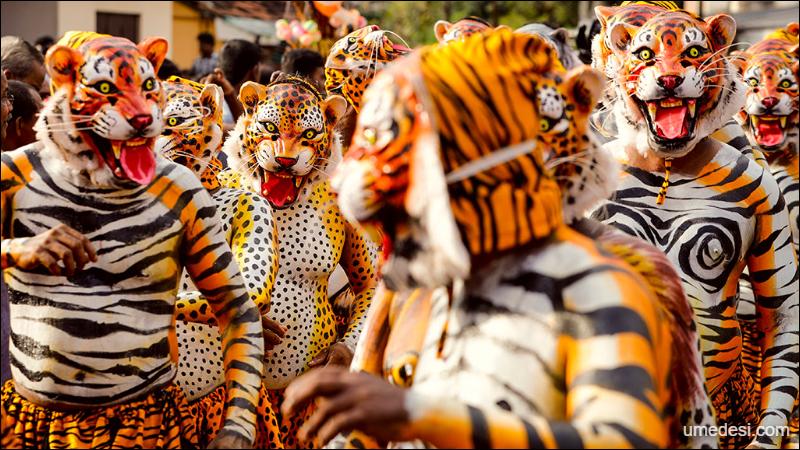
This is a folk art that involves men painting their bodies as tigers and leopards, and dancing to the beats of drums. The performers wear masks and costumes, and mimic the movements of wild animals. The pulikali is a fun and colorful way to entertain the crowds.
Onathappan
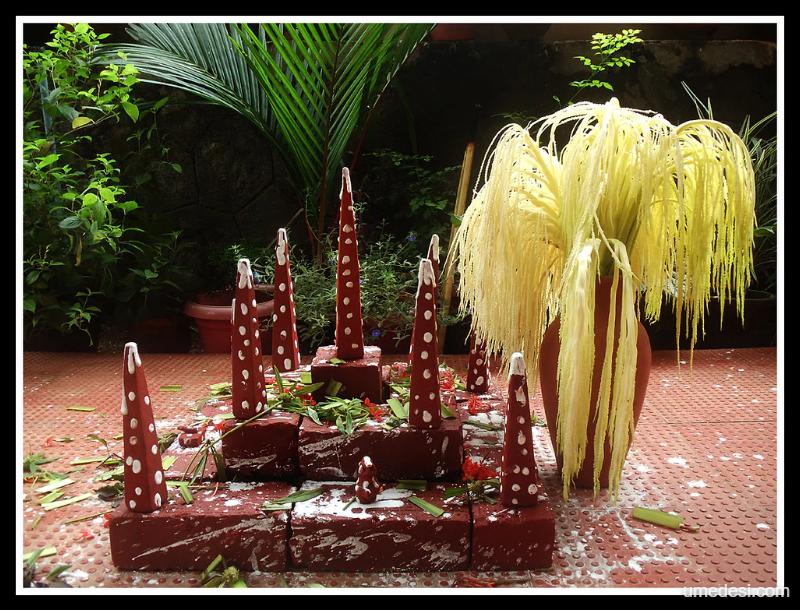
This is a clay pyramid that represents King Mahabali or Lord Vishnu. It is placed in the center of the pookalam, and worshipped with flowers, fruits, and incense. On Thiruvonam day, the onathappan is immersed in water, as a farewell to King Mahabali.
Onam’s Cultural Significance
Onam symbolizes the spirit of unity and togetherness, across all classes of society. The festival underscores Kerala’s agrarian roots, where the harvest is celebrated as a community effort. People from all walks of life come together to partake in the festivities, reinforcing the essence of “Vasudhaiva Kutumbakam” the world as one family.
Onam Beyond Kerala
As the Indian diaspora spreads across the world, so does the spirit of Onam. Indians of Kerala origin living outside the state organize celebrations that bring a taste of Kerala’s traditions and flavors to distant shores.
Onam, with its legends, intricate floral carpets, boat races, and grand feasts, offers a window into Kerala’s cultural ethos. It encapsulates the colorful tapestry of this enchanting land and serves as a testament to unity, harmony, and the enduring ties that bind its people.
Top Image Source
Sree Rama Navami
What is Sree Rama Navami?
Sree Rama Navami is a Hindu festival that celebrates the birth of Lord Rama, who is believed to be the seventh incarnation of Lord Vishnu. It is observed on the ninth day (navami) of the Chaitra month of the Hindu lunar calendar, which typically falls in March or April of the Gregorian calendar.
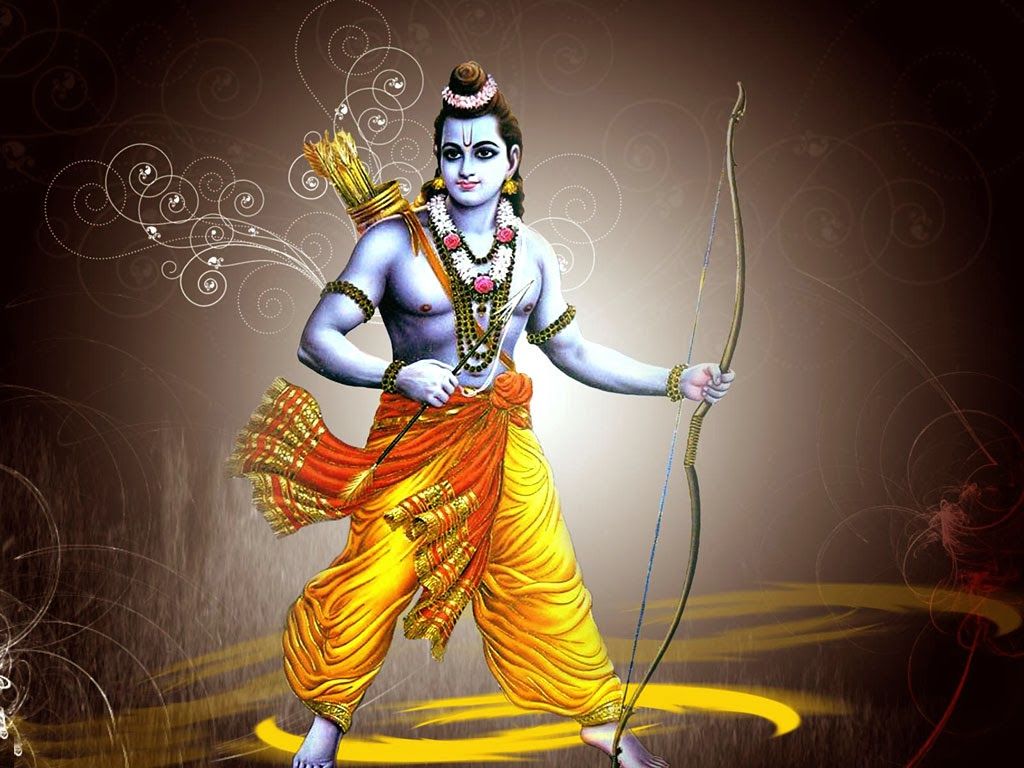
This festival is celebrated all over India and in other parts of the world where there is a significant Hindu population. However, it is most widely celebrated in the states of Uttar Pradesh, Bihar, Tamil Nadu, Andhra Pradesh, Telangana, Karnataka, and Maharashtra.
The religious and cultural significance of Sree Rama Navami lies in the belief that Lord Rama was born to King Dasharatha and Queen Kausalya in Ayodhya, and his birth marked the beginning of a new era of righteousness, justice, and peace. Lord Rama is considered to be an embodiment of virtue, truth, and dharma, and his life story, as told in the epic Ramayana, is a source of inspiration and guidance for millions of people.
How is Sree Rama Navami celebrated?
In different parts of India, Sree Rama Navami is celebrated in different ways and with different traditions. Here are some of the prominent regional variations:
Uttar Pradesh:
In Ayodhya, the birthplace of Lord Rama, the festival is celebrated with great pomp and splendor. Devotees take a dip in the sacred river Sarayu and visit the Rama Janmabhoomi temple. A grand procession is taken out, which is known as Shobha Yatra, in which idols of Lord Rama, Sita, Lakshmana, and Hanuman are carried on decorated chariots.
Andhra Pradesh and Telangana:
The festival is celebrated as a nine-day-long event, with various cultural and religious programs organized every day. On the ninth day, a special puja is performed, followed by a procession in which the idols of Lord Rama and Sita are carried on a chariot.
Tamil Nadu:
The festival is celebrated with great devotion, and devotees recite the Ramayana and perform puja at home. In some temples, a special puja is performed, and the idols of Lord Rama and Sita are taken on a procession.
Karnataka:
The festival is celebrated with great enthusiasm, and devotees visit temples to offer prayers to Lord Rama. In some places, a special puja is performed, followed by a procession in which the idols of Lord Rama and Sita are carried on a chariot.
Maharashtra:
The festival is celebrated with great fervor, and devotees observe a fast on this day. Special pujas are performed in temples, and in some places, a procession is taken out, in which the idols of Lord Rama, Sita, and Lakshmana are carried on a chariot.
In all these regions, the festival is celebrated with the utmost devotion and enthusiasm, and it serves as a reminder of the values of righteousness, truth, and dharma that Lord Rama stood for.
Who is Lord Sree Rama?
Lord Sree Rama is a revered deity in Hinduism and is believed to be the seventh avatar of Lord Vishnu. He is considered to be an embodiment of virtue, righteousness, and dharma.
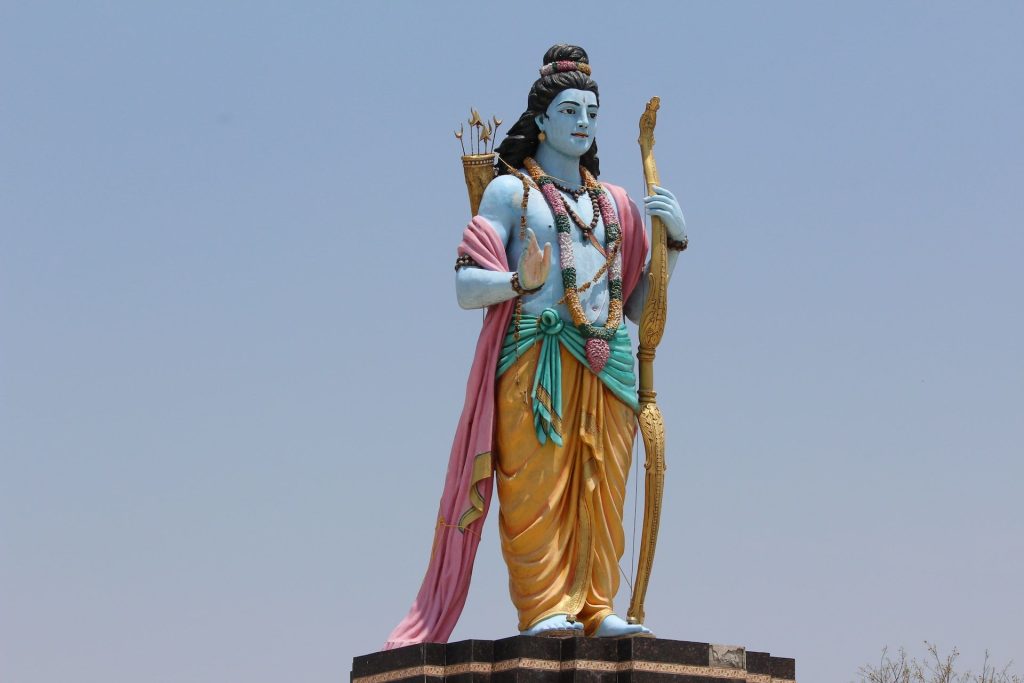
Photo by Pavan Kumaar on Unsplash
Ramayana – the story of Rama
According to Hindu itihasa – tradition of oral history, Lord Sree Rama was born to King Dasharatha and Queen Kausalya in Ayodhya. He was the eldest son of the king and was destined to be the next ruler of the kingdom. However, due to a twist of fate, he was exiled from his kingdom for fourteen years by his stepmother.
A quick Summary of the story of Lord Sree Rama
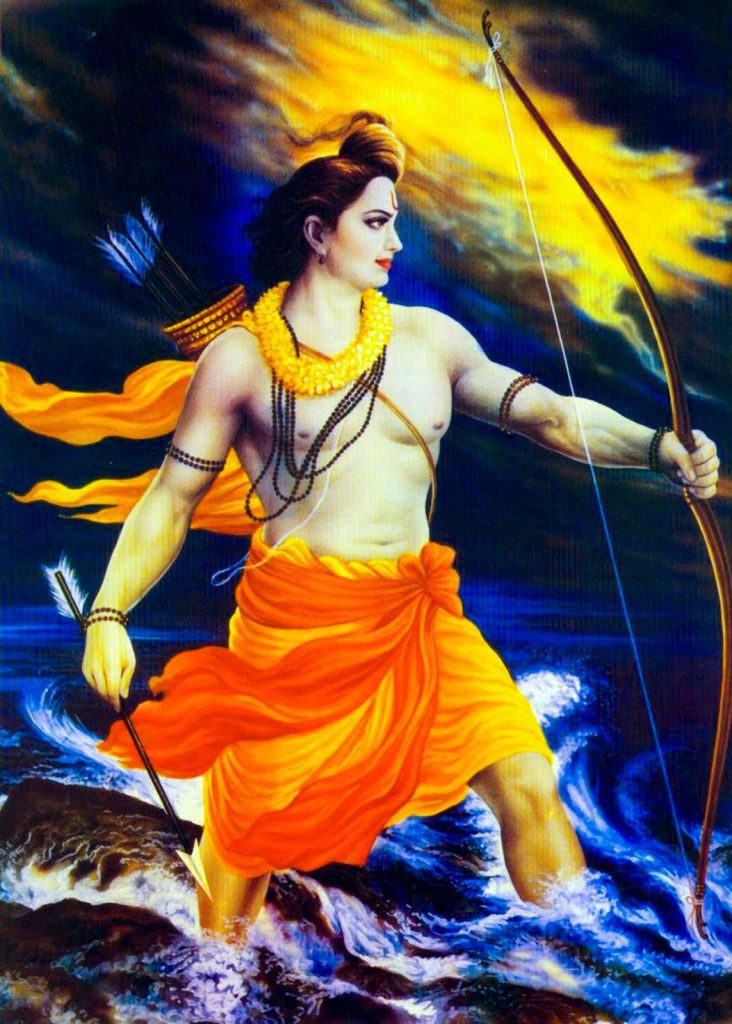
During his exile, Lord Sree Rama fought against the demon king Ravana and rescued his wife Sita, who had been kidnapped by Ravana.
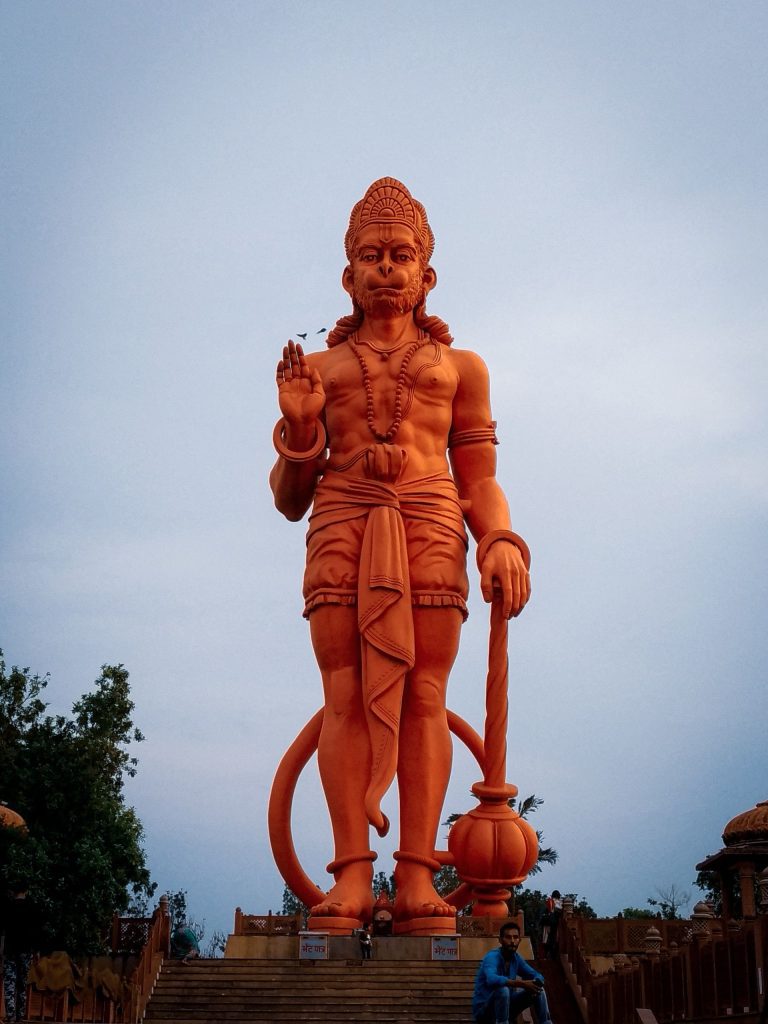
Photo by Deepak Kosta on Unsplash
With the help of his loyal brother Lakshmana and the vanara (half human and half ape) god Hanuman, Lord Rama defeated Ravana and returned to Ayodhya to take his rightful place as the king.
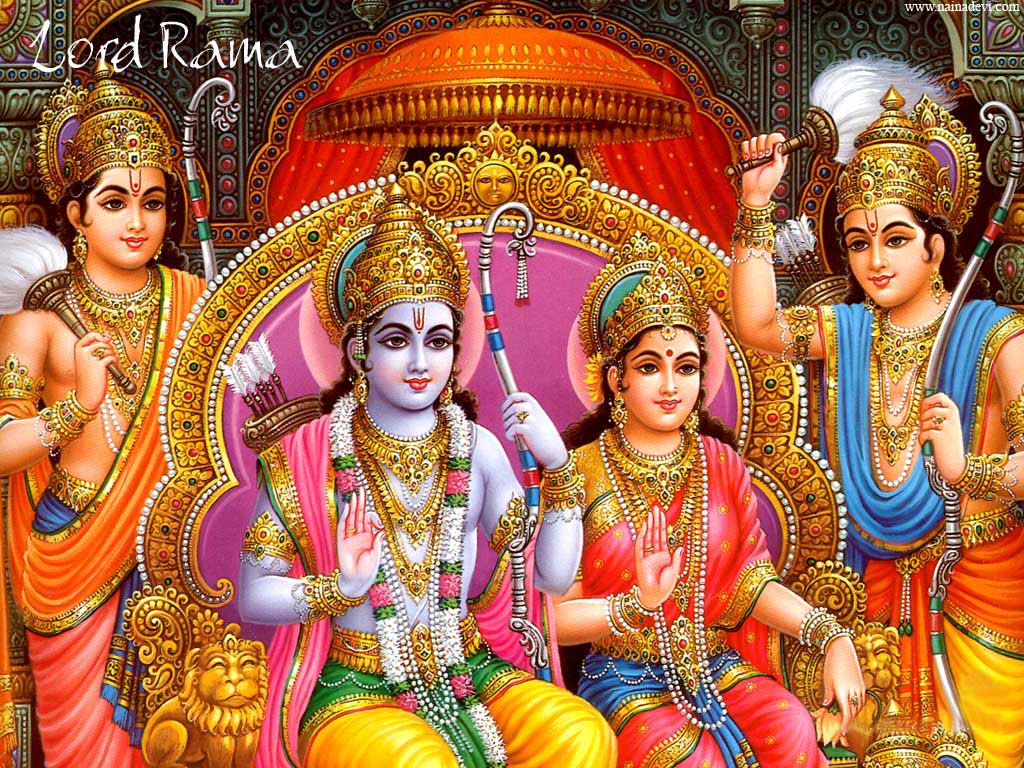
Learnings from Ramayana
Lord Sree Rama’s story is told in the epic Ramayana, which is one of the most important texts in Hinduism. His life story is considered to be a source of inspiration and guidance for millions of people, and he is revered for his adherence to dharma, his devotion to his wife Sita, and his compassion towards all living beings.
Source – Ramayana: The Legend of Prince Rama
Lord Sree Rama’s story also teaches important lessons about morality, self-control, and the importance of living a virtuous life. For Hindus, Lord Sree Rama is not just a deity, but a role model whose life serves as a guide for how to live a righteous and meaningful life.
Rama Temples around India
Here are some of the famous temples around India dedicated to Lord Rama, listed by region:
North India:
Ram Janmabhoomi Temple, Ayodhya: This temple is considered to be the birthplace of Lord Rama and is one of the most important pilgrimage sites for Hindus. The temple was built on the site of a mosque, which was demolished in 1992, leading to a long-standing legal dispute. The construction of a grand temple at the site is currently underway.
Hanuman Garhi Temple, Ayodhya: This temple is dedicated to Lord Hanuman, who is a loyal devotee of Lord Rama. The temple is located on a hill and is one of the most popular pilgrimage sites in Ayodhya.
Raghunath Temple, Jammu: This temple is dedicated to Lord Rama and is located in the heart of Jammu city. The temple is famous for its exquisite architecture and intricate carvings.
South India:
Sri Ranganathaswamy Temple, Srirangam: This temple is dedicated to Lord Ranganatha, a form of Lord Vishnu, who is believed to be an incarnation of Lord Rama. The temple is located on an island in the Kaveri River and is one of the largest temple complexes in India.
Bhadrachalam Temple, Telangana: This temple is dedicated to Lord Rama and is located on the banks of the Godavari River. It is believed that Lord Rama and Sita stayed at this site during their exile.
Sri Kodandarama Temple, Vontimitta: This temple is dedicated to Lord Rama and is located in Andhra Pradesh. The temple is famous for its stunning architecture and is believed to have been built during the reign of the Vijayanagara Empire.
East India:
Jagannath Temple, Puri: This temple is dedicated to Lord Jagannath, who is a form of Lord Vishnu and is believed to be an incarnation of Lord Rama. The temple is one of the most important pilgrimage sites in India and is famous for its annual Rath Yatra festival.
Shree Ram Mandir, Bhubaneswar: This temple is dedicated to Lord Rama and is located in the capital city of Odisha. The temple is famous for its exquisite architecture and intricate carvings.
West India:
Ram Mandir, Nashik: This temple is dedicated to Lord Rama and is located in the city of Nashik. The temple is famous for its stunning architecture and is believed to have been built during the 18th century.
Ram Kund, Panchavati: This is a sacred bathing spot located in the city of Nashik, where Lord Rama is believed to have taken a bath during his exile. The site is considered to be of great religious significance for Hindus.
These are just a few of the many temples dedicated to Lord Rama across India. Each temple has its own unique history and significance, and they all serve as important pilgrimage sites for devotees of Lord Rama.
Image Sources:
Image 1 | Image 2 | Image 3 | Image 4
What is NavRoz?
What is NavRoz?
Indian Parsis celebrate Nowruz, which is the Persian New Year, and it is known as “Navroz” in India. The celebration of Navroz among Indian Parsis has its roots in the Zoroastrian tradition of ancient Persia, and it is celebrated as a cultural and social festival.
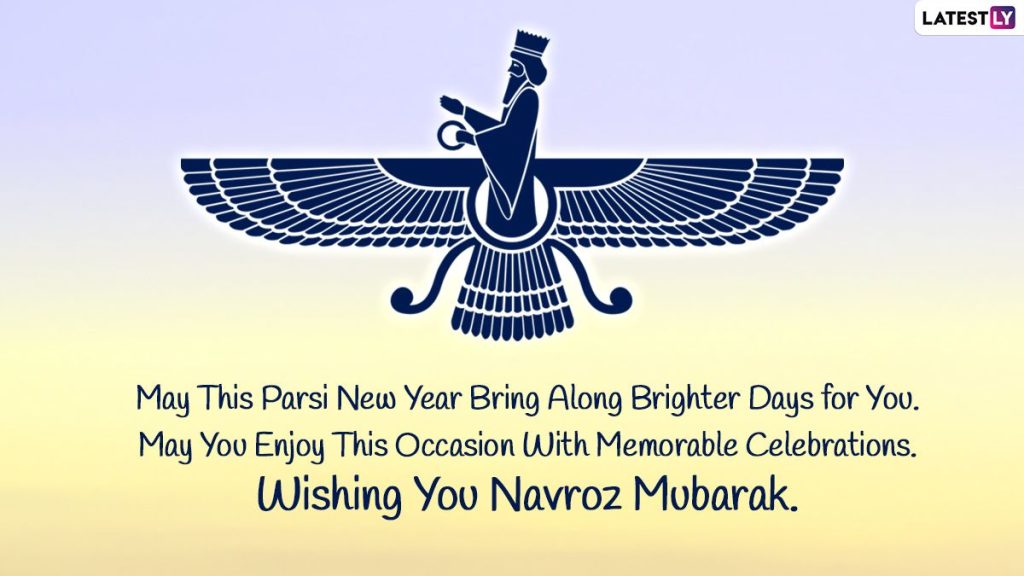
Nowruz is a Persian festival that marks the beginning of the new year and the start of spring. It is celebrated on the spring equinox, which usually falls on March 20th or 21st. Nowruz is a combination of two Persian words, “now” meaning new, and “ruz” meaning day. Thus, Nowruz means “new day.”
Where is Nowruz from?
The origins of Nowruz can be traced back to ancient Persia and Zoroastrianism, which was the dominant religion of the region before the arrival of Islam.
Why are they in India?
Zoroastrians, also known as Parsis, have a significant presence in India, particularly in Mumbai and Gujarat. The arrival of Zoroastrians in India can be traced back to ancient history and is attributed to historical events in Persia (present-day Iran). Here’s a brief overview of why and how Zoroastrians came to India:
- Persecution in Persia: Zoroastrianism is one of the world’s oldest monotheistic religions, founded by the prophet Zarathustra (Zoroaster) in ancient Persia around the 6th or 7th century BCE. For several centuries, Zoroastrianism was the dominant religion in the region. However, during the 7th century CE, Persia was conquered by Arab forces, and Islam became the dominant religion. Zoroastrians faced religious persecution under Islamic rule, which led to a mass exodus from Persia.
- Arrival in India: Seeking refuge from religious persecution, a group of Zoroastrians fled Persia and set sail to various regions to find safe havens. One of these groups landed on the western coast of India in the state of Gujarat around the 8th or 10th century CE. They settled in the town of Sanjan and sought permission from the local king to stay in India.
- The Sanjan Agreement: The Zoroastrian immigrants, led by their priest and spiritual leader, Dasturji Kaus, approached the local king, Jadi Rana, seeking permission to settle in Sanjan. The king, being cautious about accepting foreigners, presented a vessel filled with milk to symbolize that the land was already full and could not accommodate more people. The wise Zoroastrian priest added a pinch of sugar to the milk, signifying that they would blend harmoniously with the existing population. Impressed by this gesture, the king granted them permission to settle, and this event is known as the “Sanjan Agreement”.
- Preservation of Identity: Over the centuries, the Parsis in India retained their distinct Zoroastrian identity and culture while assimilating with Indian society. They have made significant contributions to India’s economic, cultural, and social fabric. Parsis have been active in various fields, such as business, industry, education, and philanthropy.
Today, India is home to a vibrant Parsi community that continues to uphold their Zoroastrian beliefs and traditions. They have established fire temples for worship, and Zoroastrian practices, including the Tower of Silence for the disposal of the dead, are followed by some Parsis.
The Parsis in India have made lasting contributions to the country’s pluralistic and diverse society, and their presence is a testament to India’s tradition of providing refuge and acceptance to those seeking shelter and freedom from persecution.
When is Navroz or Nowruz?
The celebration of Navroz among Indian Parsis usually takes place in the month of March, and it is marked by a variety of customs and traditions. The celebrations usually begin a few days before the actual day of Navroz, and the preparations include cleaning and decorating the house, buying new clothes, and preparing special dishes.
What are the main traditions?
One of the main traditions of Navroz celebrations among Indian Parsis is the setting up of a Sofreh Haft Sin, which is a traditional table setting consisting of seven items that begin with the Persian letter “sin”. The seven items in the Sofreh Haft Sin include
- Sabzeh (wheat or lentil sprouts),
- Samanu (sweet pudding made from sprouted wheat),
- Senjed (dried fruit of the oleaster tree),
- Seer (garlic),
- Seeb (apple),
- Somāq (sumac berries), and
- Serkeh (vinegar).
- In addition to these seven items, other items such as coins, candles, may also be included in the Sofreh Haft Sin.
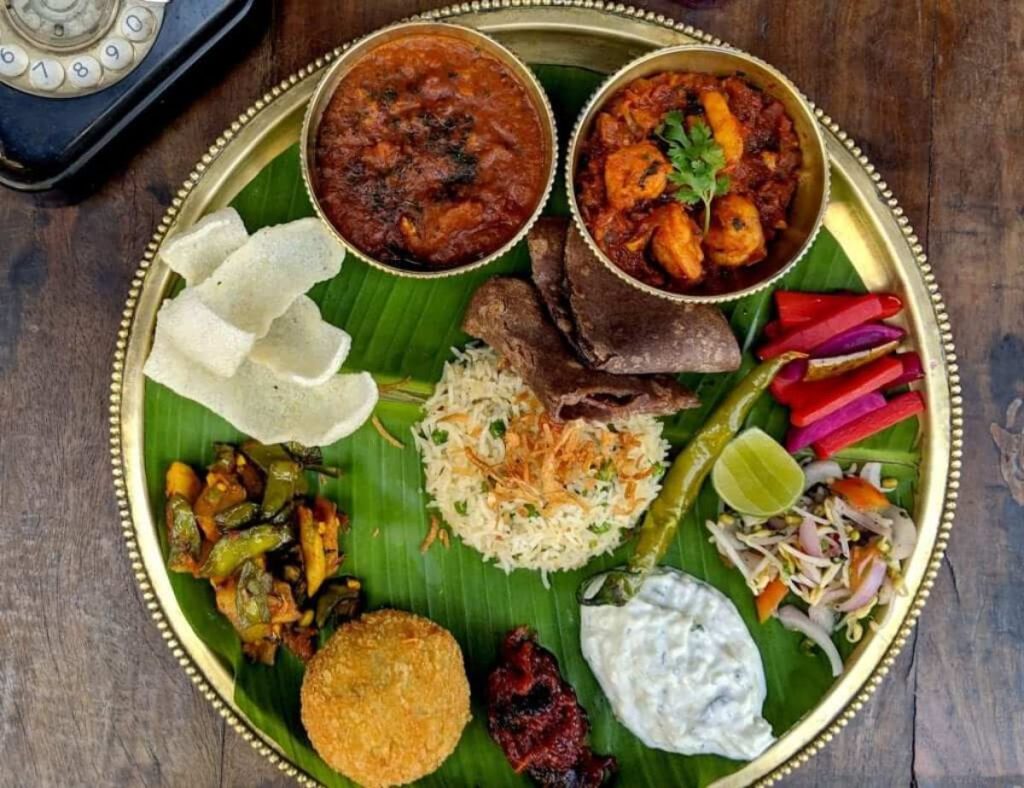
Apart from the Sofreh Haft Sin, other customs and traditions observed by Indian Parsis during Navroz celebrations include visiting friends and family, exchanging gifts, and enjoying traditional Parsi dishes such as Sali boti (a meat dish with potato straws), Dhansak (a lentil and meat stew), and Ravo (a sweet dish made with vermicelli and nuts).
Overall, Navroz celebrations among Indian Parsis are marked by joyous and festive gatherings with family and friends, and it is an important occasion for preserving and celebrating their cultural heritage.
The term Desi can refer to people of Indian subcontinent origin or ancestry, or it can refer to the cultural practices and products of the region.
Desi food, will include dishes such as biryani, Pongal, samosas, Dosa, Idli, Parantha, Chawal and dal, while Desi fashion may feature traditional clothing styles like sarees, salwar kameez, Dhoti, and kurta pajama.
Desi music may include traditional folk music (dozens of styles), classical music (also several distinct schools), traditional dance (several traditional and ancient styles) and popular movie or music genres like Bollywood, Tollywood, Kollywood, Mollywood (all different regional language film industry names – a play on the word Hollywood).
Use the Menu at the very top of this page to view many more articles.



